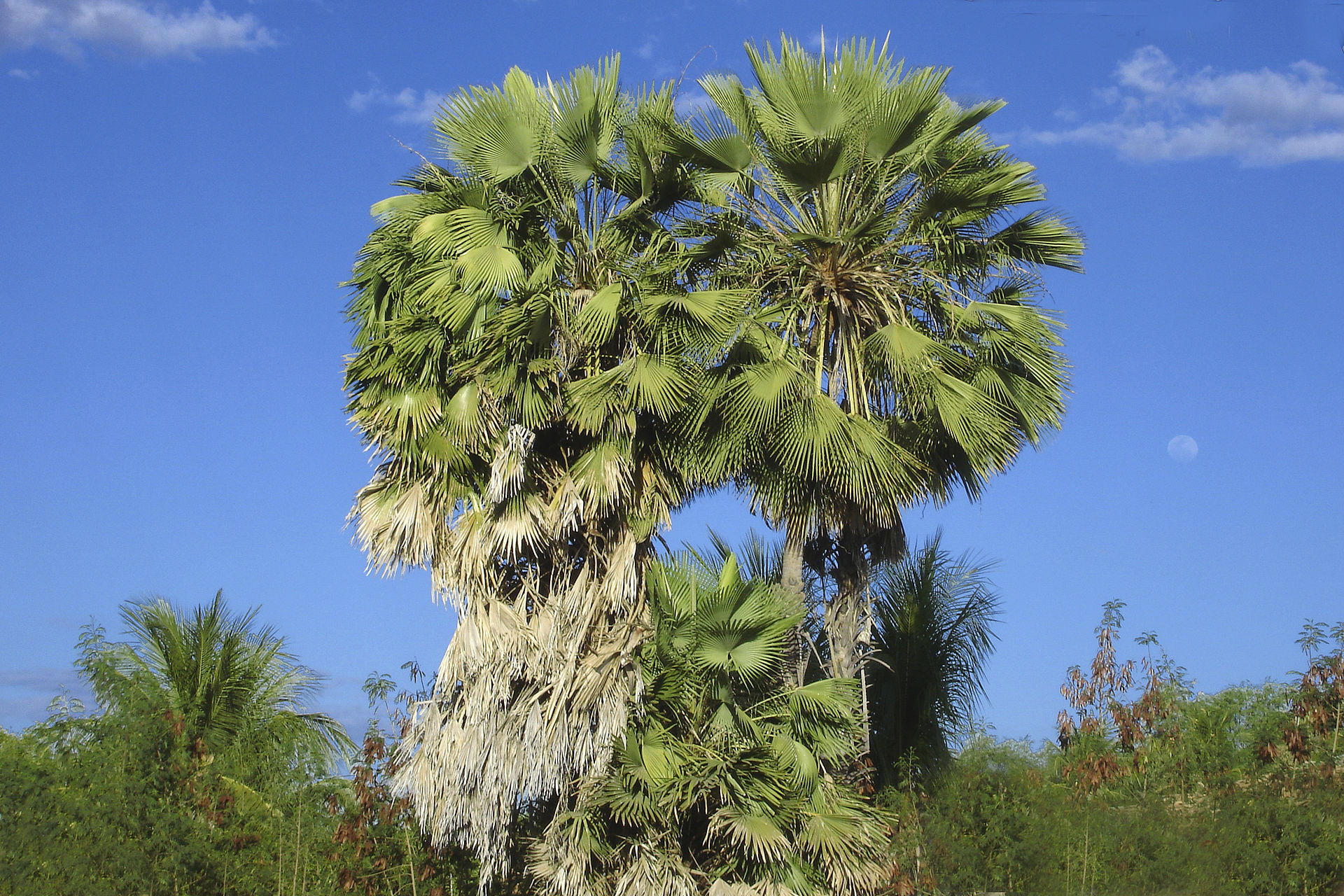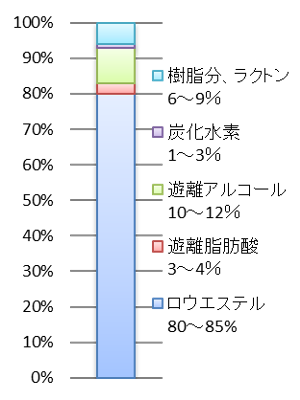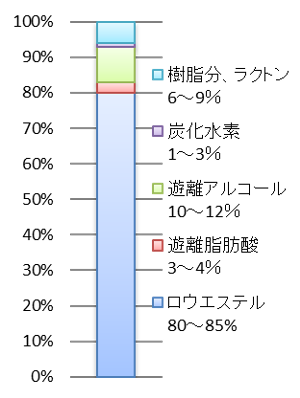
carnauba wax
Field of use
Cosmetics field
It has excellent melting point improvement, gloss, moisture resistance, and emulsifying properties, and is widely used in cosmetics, lipsticks, foundations, eyebrows, styling agents, etc.
Food field
It is used as a coating agent for tablet-type confectionery due to its moisture-proofing and polishing effects, and is also used in gummy sweets due to its mold release properties.
cutting edge field
It is widely used as toner for printers and as a release agent for semiconductor chips.
past
Precision casting, carbon paper ink
the current
Cosmetics, polishes, pharmaceuticals, polishes, paints, copy machine toners
future
Rubber glossing agent made from carnauba wax as the main raw material *When added to tires, it significantly improves gloss while maintaining advanced functionality compared to existing waxes. In 2019, we obtained a patent as a black glossing agent for rubber.
Features
The luster, luster, toughness, hardness, and microcrystallinity are the highest among vegetable waxes.
Our company manufactures high-quality products with excellent hue without sacrificing the essence of the wax by using a refining method developed for the first time in Japan (Patent No. 462578) using crude wax imported from Brazil. . Our products have been used primarily in cutting-edge industrial fields such as information recording materials, where our products are highly regarded for their high quality, which takes advantage of the advantages of natural products.
Our company manufactures high-quality products with excellent hue without sacrificing the essence of the wax by using a refining method developed for the first time in Japan (Patent No. 462578) using crude wax imported from Brazil. . Our products have been used primarily in cutting-edge industrial fields such as information recording materials, where our products are highly regarded for their high quality, which takes advantage of the advantages of natural products.
What is carnauba wax?
This is a vegetable wax produced from the leaves of the Brazilian carnauba palm. Among natural vegetable waxes, it has the best shine, shine, toughness, hardness, and microcrystallinity, and is highly praised for its hardness adjustment function that holds together other oil-based materials. The carnauba palm, which is the raw material, is a specialty of Brazil in South America and is limited to those that grow in the northeastern region. The leaves of the carnauba palm are fan-shaped, and the wax is present in powder form on the surface, especially on the underside.
Characteristics of the derived plant (carnauba palm)
The carnauba palm is a tall tree that is 7 to 8 meters tall, and it takes about 15 years before the wax can be collected from a wild plant that grows in clusters on sandy soils and riversides. Harvesting is done twice a year, the first time is from September to October, when 30-40% of the leaves are cut, and the second time is from December to January, when the remaining leaves are cut. The powder on the soft leaves at the tips of the trees is of high quality and is called the No. 1 product, making up only 20% of the total. The collected leaves are sun-dried for three to four days or more, pounded, and then chopped, separated, or scraped to collect powder. The powder (wax) that covers the fan-shaped leaves plays a role in preventing water evaporation during seasons with little rainfall. Currently, a threshing machine is used to separate the powder from the leaves.
History of carnauba wax
Humboldt, an 18th- and 19th-century German naturalist, named the Carnauba palm "Tree of Life." In its native Brazil, everything produced by the carnauba palm, including its fruit, trunk, leaves, and wax, was used for a variety of purposes, including food, building materials, and medicinal purposes. Each tree is a plant that enriches people's lives throughout the year, and especially during periods of drought, they serve as a valuable food source of sustenance for poor residents. It became known in Europe and America in the late 18th century. It was first used as a floor polishing material, and then exported to various countries around the world as carbon paper and various polishing waxes. In modern times, its excellent functionality is utilized in cutting-edge fields such as information recording materials and electronic components.
Carnauba wax product series list
| product series | Product name | shape |
|---|---|---|
| Futuristic products (functionality/culture) | Highly deodorized carnauba powder | true sphere powder |
| F series (Pesticide free/Safe and secure) | - | - |
| NC series (high precision products) | NC-1810 | pellet |
| Standard refined products | Refined carnauba wax No.1 | pellet |
| WA-05 | pellet | |
| smearing wax | pellet | |
| Refined carnauba wax powder-N | powder | |
| Refined carnauba wax No.1(P) | powder | |
| Cost-oriented products | Carnauba wax No. 1 | pellet |
| Carnauba wax No. 2 | pellet |
Carnauba wax product performance comparison table
| futuristic products | Highly purified | Standard | Focus on cost | |
|---|---|---|---|---|
| product name | Highly deodorized carnauba wax true sphere powder | NC-1810 | Refined carnauba wax No.1 | Carnauba wax No. 2 |
| shape | flake | flake | flake | flake |
 |  |  |  | |
| Transparency after dissolution |  |  | ||
| explanation | In response to requests for changing product raw materials from fossil raw materials to natural products, we have created CERARICA natural powder series with a variety of textures and particle sizes. | Highly refined carnauba wax product No. 1. Deodorizing grade. | Refined carnauba wax No. 1 product | Carnauba wax No. 2 |
| composition |  |  |  |  |
| acid value | < 10 | < 10 | < 10 | < 10 |
| saponification value | 78~95 | 78~95 | 78~95 | 78~95 |
| Iodine value | < 10 | 5~14 | < 10 | 5~14 |
| Melting point (℃) | 80~86 | 80~86 | 80~86 | 80~86 |
| peroxide value | - | - | - | - |
| Heavy metals (ppm) | < 20 | < 20 | < 20 | < 20 |
| Arsenic (ppm) | < 2 | < 2 | < 2 | < 2 |
| specific gravity | 0.997(25℃) | 0.997(25℃) | 0.997(25℃) | 0.997(25℃) |
| Penetration (100g/5s) | < 1(25℃) | < 1(25℃) | < 1(25℃) | < 1(25℃) |
| Viscosity (cP) | 21.6(100℃) | 21.6(100℃) | 21.6(100℃) | 21.6(100℃) |
| Flash point (℃) | 318 | 318 | 318 | 318 |
| Compatible standards | Quasi-drug raw material standards 2006 (external standards) Food Additives Official Standards 9th edition Japanese Pharmacopoeia |


